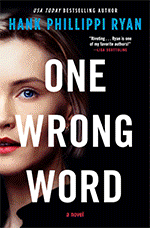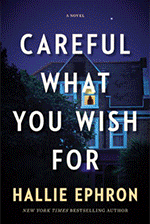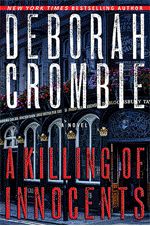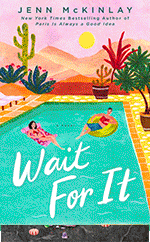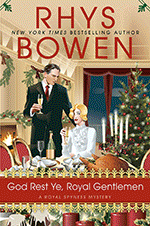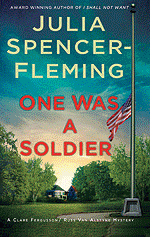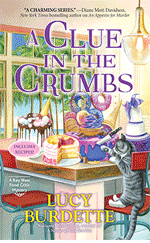DEBORAH CROMBIE: I have been amusing myself in the latest scene in Kincaid/James #20. I finally have moved (inched) the plot along to scenes I have always intended to set in Richmond. I had been drawn to this western part of Greater London (Richmond, Twickenham, Teddington Lock,) along the course of the Thames, since before the huge popularity of streaming series Ted Lasso. No, I haven't actually been working on this dratted book since 2020! But we didn't have Apple TV then and I don't think we watched the first season of Ted Lasso until maybe summer of 2022, by which time the book was definitely percolating.
For those who haven't seen the series, an American football coach is hired to coach a failing English soccer team called the Richmond Greyhounds, and while not all the purported Richmond scenes were filmed in Richmond (several of the exterior locations were actually filmed in Notting Hill) some of the real Richmond locations became iconic.
Ted's fictional flat is in the little alleyway that Gemma walks through in the scene below. The pub known as The Crown and Anchor in the series is actually The Prince's Head, below.
Richmond Green, and these iconic red phone boxes, were used repeatedly in all three seasons.
Of course, since the series, The Prince's Head has become a fan destination--and the pub has made the most of it!
Here I am in the "Ted Lasso corner."
Having just eaten what looks like a massive plate of triple-fried chips and something--fish, maybe? Some fellow Ted Lasso fans (from Australia!) took the pic.
In this snippet, Gemma samples the chips. She's following leads in Richmond with her new detective sergeant, Davey Butler, who she suspects might not be all he appears to be.
They found a spot in a multi-story carpark in Richmond town
center and walked towards the Green. “There are a couple of pubs to choose from,”
Davey Butler told Gemma. Once out of the car, he seemed more relaxed, almost jaunty
as he led the way around a small church and then through narrow paved alleys with
little shops and boutiques.
“I don’t know Richmond,” said Gemma. “Bit on the far side of
London for me, growing up.”
“I came here a good bit. Night out with the lads, impress a
date. Bit pricey for drinking, though,” Butler added, and Gemma liked that he’d
had to consider the cost. The sun felt warm on her shoulders and the whole place
had a festive feel, with the colored pennants strung across the alleyway moving
gently in the breeze. They came to the alleyway’s end and suddenly the Green was
before them.
“Oh!” Gemma exclaimed. “How lovely!” They stood at the edge
of a wide paved area, bordered by a narrow street, and beyond that, huge trees marked
the edge of the wide, grassy expanse of the Green. People sat on benches or lay
on blankets in the grass, and in the distance, Gemma saw a group playing a desultory
lunchtime game of football.
“There’s The Prince’s Head, just here, and The Cricketers a
bit further along,” said Butler, and Gemma realized they had come out of the alleyway
right at the first pub.
“This looks fine, don’t you think?” The shadowy interior looked
cool after the warmth of the sun, and Gemma realized suddenly that she was starving.
Since they were on the late side of lunch, they easily found
a table in a front window where they could look out over the Green. Gemma perused
the menu while Butler fetched drinks from the bar. When he returned, she took an
unladylike gulp of her fizzy water with lime. The sun and too much coffee had ganged
up to give her a terrible thirst and the beginnings of a headache.
“Non-alcoholic. Cheers,” said Butler, raising a half pint of
beer to her. “It’s much better than it used to be.”
“I’ll take your word
for it,” Gemma told him. “Not much of a beer drinker.”
When they’d both ordered food at the bar, Gemma settled back
into her seat and admired the view. “This is nice. Have you been here often?”
“Occasional nights out with the lads. A few dates. It’s a bit
off my usual manor as well.”
“I should bring my husband here for a dinner date some night,
assuming we ever manage to have a date.” Gemma sighed.
“It must be challenging. Both of you in the job, and three kids,
you said?” Butler’s expression was open, friendly, and if he was digging, she’d
given him the opening.
“We’re a blended bunch. His son, my son, and our foster daughter.
We’ve finally given in and hired a part-time nanny, but I feel like a bloody yummy
mummy even admitting to such a thing,” she added with a grin.
“Sounds right bougie,” Butler agreed, and they laughed. “You
can just say ‘child minder.’ That removes a bit of the stigma.”
“Just don’t spread the ‘nanny’ word around at the nick,” Gemma
said easily, thinking that she’d know soon enough if he did. She’d made her overture,
but she wasn’t about to tell him any more of their personal details.
Butler nodded. “Right, boss.” After a moment’s hesitation, he
began, “Your foster daughter—” but just then their food arrived and the moment was
lost.
I haven't actually mentioned Ted Lasso, because it won't mean anything to non series fans, and also because I hope people will still be reading my books in some distant future when Ted Lasso will have faded into no more than a cultural footnote. (There was this show about ethics and kindness and good sportsmanship...) But the references made me smile.
Readers, do you have favorite Easter eggs in books?
And in a totally unrelated question, how do you feel about exclamation points? I was taught in writing classes that you should never use them, but I think that's silly. Of course they can be overdone, but why waste a perfectly good punctuation mark? In this snippet, it seemed weird to end Gemma's exclamations with periods.
Oh, and a progress report: a couple of weeks ago I passed the 50,000 word mark in this manuscript, so I can now at least say that I am on the downslope!
P.S. By weird coincidence, I'd just started re-listening for the umpteenth time (don't judge, these books are my comfort listens) to the first Ben Aaronovitch Rivers of London book, published in 2011 although I didn't read it until a couple of years later. And there, at the beginning of Chapter 4, is my introduction to Richmond and Eel Pie Island. :-)









.jpg)





















